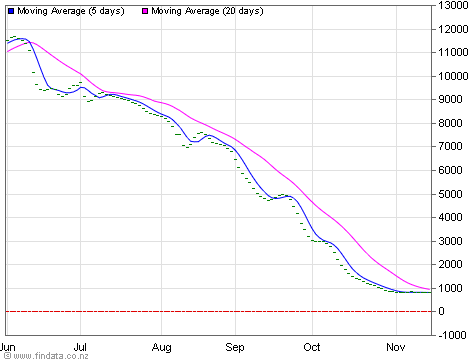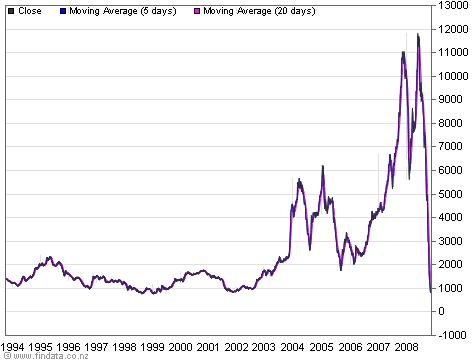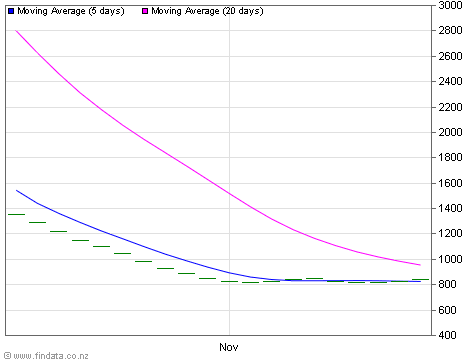Look at the last 6 months:

Off the cliff. Looking at that, some commentators have gone so far as to start talking about riots in the streets and overthrown governments due to food shortages and starving children. Shades of TEOTWAWKI, even.
Looking at short-term numbers, it is easy to see how one can think so.
My gut feeling for this recession/depression has been that we would return to sanity. That is to say, return to what prices and supply/demand was like in 2002-ish. The economy MUST fall pretty hard, and around the world at that, in order to reach these levels. The governments are trying to make money cheap to borrow so the outstanding credit will expand again, and it will not work. There is oversupply in everything except energy, and the prices (and, unfortunately, supplies and the jobs to provide the supplies) must fall back to levels that make sense without the easy credit bubble which has now burst.
The BDI used to ride around 1000. Then commodities started skyrocketing this year and to a lesser extent in previous years, and we added another zero to the BDI. Note the trend on the 15-year chart:

That shows a bit of an overshoot in the correction, but it shows me a correction back to the traditional level of the BDI.
And it looks like the correction may have stopped.

Or at least slowed drastically. It is to be hoped that we are seeing the beginnings of the end of the recession already: stabilization of prices.
edit: something is wrong with the middle image or else it's my computer. Click on it to watch the BDI falling off a cliff like all the other economic indicators have done.


2 comments:
The BDI is an index of prices, not volume. The two are related, but not precisely. Volume has slipped much less than 94%, but the BDI's elasticity has resulted in a much bigger drop in prices.
Besides, even if volume were to drop by 94%, that doesn't mean that all products would drop by 94%. Most of the volume drop has probably been in raw materials for construction and retail goods, not in food. In case you haven't noticed, worldwide capital expenditures are in a slump, but people are still eating just about as much as they were last year!!!!
Finally, even if trans-oceanic food shipping had dropped by 94%, that wouldn't portend panic in the US. The reason is that the US is a net *exporter* of food. So while other countries would be hurting, the US would not. In fact, if for some reason all the shippers went out of business and it became impossible to export food, then we'd have a serious oversupply of food in the US, leading to a rapid price collapse.
So if somebody wants to freak out about the financial crisis, or about the failing US auto industry, or the spiking unemployment rate, or the devilishly high foreclosure rates, or any number of other things, then maybe they'd have a leg to stand on.
Just don't bring the "BDI-driven food panic" meme into the conversation. Everybody will think that you're a nut.
I said right off the bat it's a price index, and didn't mention volume. I also didn't make much mention of how it's related to the lack of availability of credit they used to use to get the shipments paid for, but that's also related.
I'm not freaking out, but there is plenty of rumination about why the economy is going down hard in my other blog posts
and I didn't bring up the food panic, I just linked to others who did.
Post a Comment